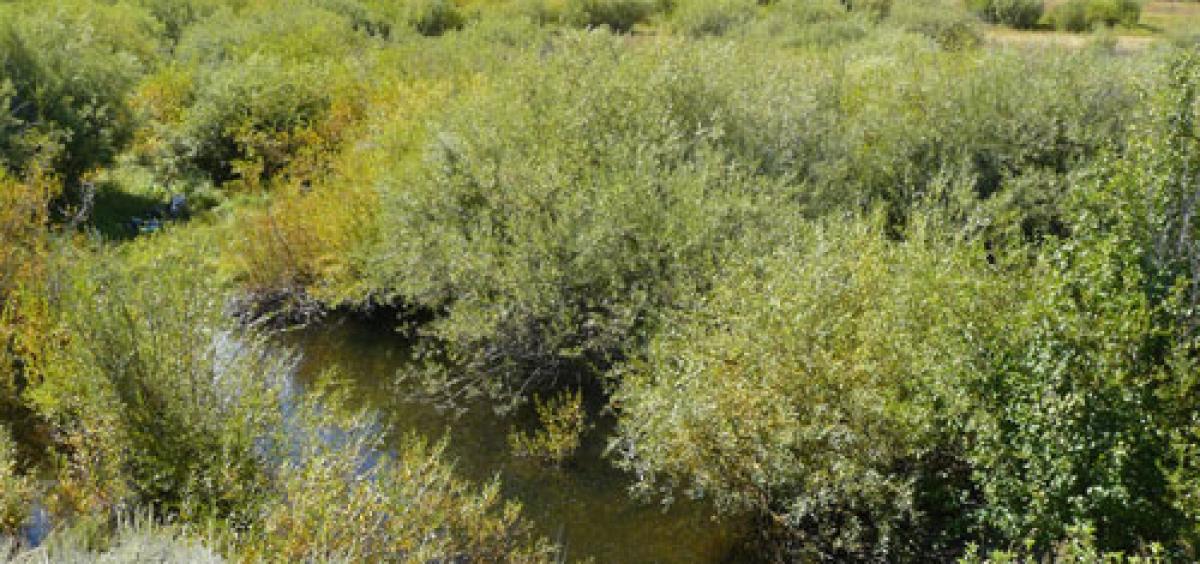
CORVALLIS, Ore. – The reintroduction of wolves into Yellowstone National Park is tied to the recovery of tall willows in the park, according to a new Oregon State University-led study.
Wolves were reintroduced to the park in 1995. The new study shows their predation on elk is a major reason for an increase in the height of willows in northern Yellowstone, said Luke Painter, a wildlife ecologist at Oregon State University and lead author on the study.
There’s been a debate among scientists over the degree to which willows may have recovered from decades of suppression by elk following the restoration of wolves and subsequent reductions in elk numbers, Painter said.
“Our results demonstrate that the reduction of elk browsing over the last two decades in northern Yellowstone has allowed willows to grow taller in many places, despite a warming and drying climate,” Painter said, adding that willows aren’t recovering in some areas due to continued browsing by increased numbers of bison.
Following wolf restoration in the 1990s, elk numbers decreased, and some researchers reported willows growing taller with reductions in elk browsing, evidence of a shift toward willow recovery.
The new study compared data from three time periods: 1988-1993, when elk densities were high and most willows very short; 2001-04, when willows may have begun to recover; and 2016-18.
The researchers confirmed that willows have indeed increased in height and cover in response to a reduction in browsing by elk.
The study is published in the journal Ecosphere.
Elk numbers in northern Yellowstone have declined from a high of nearly 20,000 in 1995 – the year wolves were restored to the park – to 4,149 counted over two days in March 2019 by biologists with Montana Fish, Wildlife, and Parks; U.S. Forest Service and U.S. Geological Survey.
Painter and co-author Michael Tercek of Walking Shadow Ecology in Montana found a strong contrast between sites along streams compared to wet meadows. Willows in meadow sites did not increase in height, but willows in stream sites increased significantly, exceeding 200 centimeters, or 6 feet – a height accessible to elk – in the summers of 2001-04 and in the spring of 2016.
They also found a significant change in willow thickets at least 200 centimeters in height along streams, with thickets occupying about 80% of willow patches in some sites, but as little as 22% in others. Tall willow thickets are an important habitat feature and an indicator of willow recovery, Painter said.
Thus, passive restoration through the return of predators has begun to reverse the loss of willows, something active culling of elk in the past was unable to accomplish, he said.
“Wolves didn’t do it all by themselves,” Painter said. “Other predators and hunters also affected elk, but this would not have happened without the wolves.
“This does not mean a wider expanse of willow habitat has been restored as existed in the early days of the park when beavers created large wetland expanses. This may eventually happen as beavers return but could take a long time to develop.”
This is the latest OSU study led by Painter that examines the effects of wolf reintroduction to Yellowstone on trees. In 2018, he published a study that showed that aspen is recovering in areas around the park, as well as inside the park boundary.
Painter teaches ecology and conservation in the OSU College of Agricultural Sciences and College of Forestry.
About the OSU College of Forestry: For a century, the College of Forestry has been a world class center of teaching, learning and research. It offers graduate and undergraduate degree programs in sustaining ecosystems, managing forests and manufacturing wood products; conducts basic and applied research on the nature and use of forests; and operates more than 15,000 acres of college forests.
About the OSU College of Agricultural Sciences: Through its world-class research on agriculture and food systems, natural resource management, rural economic development and human health, the College provides solutions to Oregon’s most pressing challenges and contributes to a sustainable environment and a prosperous future for Oregonians.
Chris Branam, 541-737-2940, [email protected]; on Twitter @branamchrisw
Luke Painter, 541-737-4531, [email protected]
Click photos to see a full-size version. Right click and save image to download.